I'm developing a Python module, with OpenCV, that connects to an RTSP stream to perform some preprocessing on the video (mostly, reducing fps and resolution), and then store it in the file system.
But, even after trying several codecs, looking for similar developments... I always end up with an empty video. I've seen this other thread (cv::VideoWriter yields unreadable video), which may be similar, but was developed on C++.
Has anyone worked on this? I normally use a sample RTSP stream as reference, such as rtsp://freja.hiof.no:1935/rtplive/definst/hessdalen03.stream, and can receive and even watch the stream from VLC correctly.
I've seen quite a lot of threads discussing how to capture video from an RTSP stream, or how to work with VideoWriters and VideoReaders classes and video files, but almost nothing combining the two.
Any help would be highly appreciated :) Thanks!!
Edit 1: Sample code used to store the frames.
#!/usr/bin/env python3
# -*- coding: utf-8 -*-
import cv2
import numpy
# Test frame.
width, height = 400, 300
width_2, height_2 = int(width / 2), int(height / 2)
frame = numpy.zeros((height, width, 3), numpy.uint8)
cv2.rectangle(frame, (0, 0), (width_2, height_2), (255, 0, 0), cv2.FILLED)
cv2.rectangle(frame, (width_2, height_2), (width, height), (0, 255, 0), cv2.FILLED)
frames = [frame for _ in range(100)]
fps = 25
# Define the codec.
#fourcc = cv2.VideoWriter_fourcc(*'X264')
#fourcc = cv2.VideoWriter_fourcc(*'XVID')
fourcc = cv2.VideoWriter_fourcc(*'MJPG')
# Create VideoWriter object
out = cv2.VideoWriter(filename='video.avi',
fourcc=fourcc,
apiPreference=cv2.CAP_FFMPEG,
fps=float(fps),
frameSize=(width, height),
isColor=True)
result = 0
for frame in frames:
result += 0 if out.write(frame) is None else 1
print(result)
out.release()
Edit 2: Solution
#!/usr/bin/env python3
# -*- coding: utf-8 -*-
import cv2
import numpy
# Test frame.
width, height = 400, 300
width_2, height_2 = int(width / 2), int(height / 2)
frame1 = numpy.zeros((height, width, 3), numpy.uint8)
cv2.rectangle(frame1, (0, 0), (width_2, height_2), (255, 0, 0), cv2.FILLED)
cv2.rectangle(frame1, (width_2, height_2), (width, height), (0, 255, 0), cv2.FILLED)
cv2.imwrite('frame1.jpg', frame1)
frame2 = numpy.zeros((height, width, 3), numpy.uint8)
cv2.rectangle(frame2, (width_2, 0), (width, height_2), (255, 0, 0), cv2.FILLED)
cv2.rectangle(frame2, (0, height_2), (width_2, height), (0, 255, 0), cv2.FILLED)
cv2.imwrite('frame2.jpg', frame2)
range1 = [frame1 for _ in range(10)]
range2 = [frame2 for _ in range(10)]
frames = range1 + range2 + range1 + range2 + range1
fps = 2
# Define the codec.
fourcc = cv2.VideoWriter_fourcc(*'MJPG')
# Create VideoWriter object
out = cv2.VideoWriter('video.avi', fourcc, float(fps), (width, height))
for frame in frames:
out.write(frame)
out.release()
